News Articles
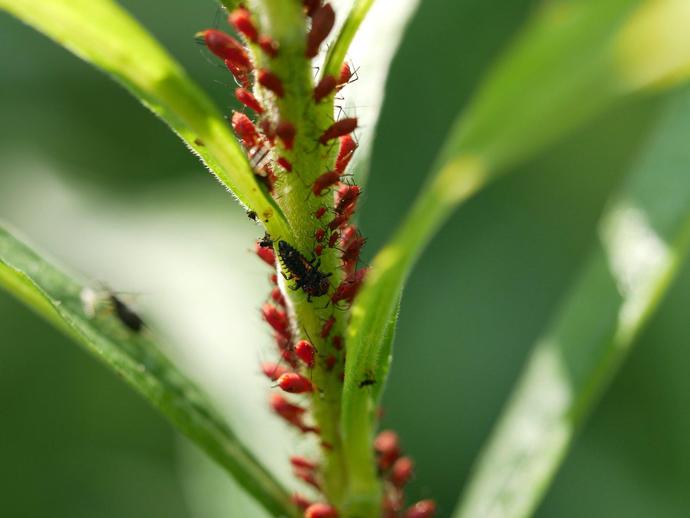
We're reaching into the archives for today's #BenInNature update presented by our friends at ...
January 31, 2021
We're reaching into the archives for today's #BenInNature update presented by our friends at Carter Bank & Trust! The following post was originally published on May 15, 2020. Welcome to the exciting conclusion to yesterday's nature post about ladybeetle larva! If you missed that post, be sure to scroll down and check it out. If you look in the center of this photo, you'll see an Asian multicolored ladybeetle larva (Harmonia axyridis). The little red things are aphids, which are small insects that suck the sap from plants. If you have even a passing interest in gardening, you probably have no love for aphids. They're massive agricultural pests, they spread quickly, and it's all but impossible to eradicate every single one. ...
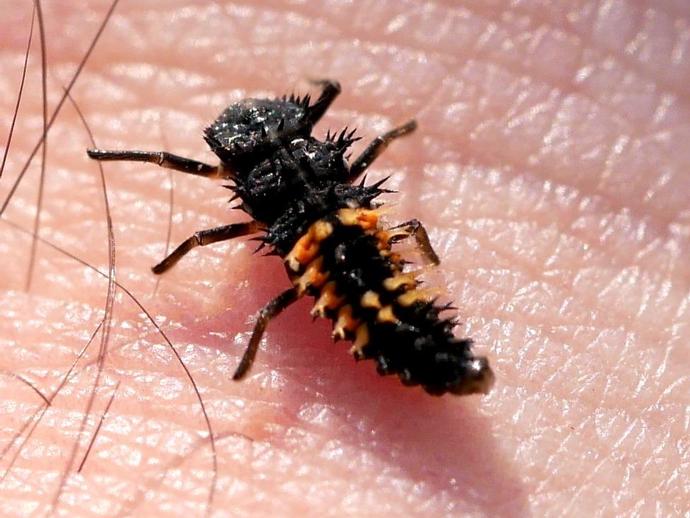
We're reaching into the archives for today's #BenInNature update presented by our friends at ...
January 30, 2021
We're reaching into the archives for today's #BenInNature update presented by our friends at Carter Bank & Trust! The following post was originally published on May 14, 2020. What a grotesque, hairy beast! And that thing crawling across my forearm ain't much to look at, either! When you see a critter like this, it might be hard to believe that it will grow up into one of the most beloved insects out there. But believe it or not, it's true: this is a ladybug larva! To be more specific, it's the larva of Harmonia axyridis, better known as the multicolored Asian ladybeetle. In some parts of America, it's also called the Halloween ladybeetle due to its tendency to invade homes around October in preparation for overwintering. ...
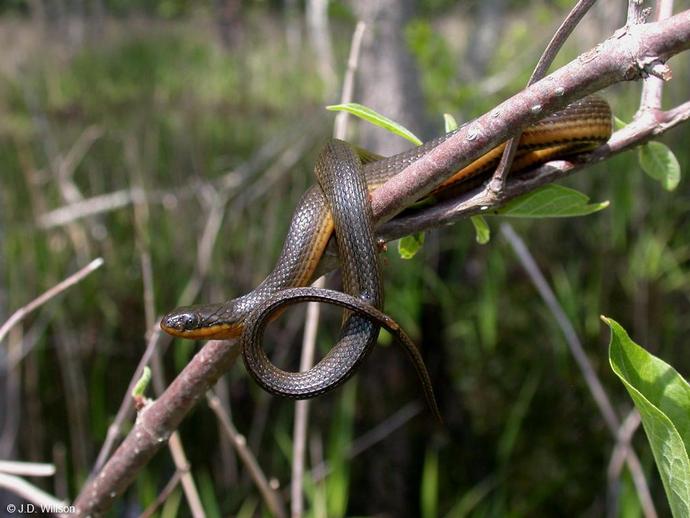
Ben here with the Friday edition of #BenInNature presented by our friends at Carter Bank & Trust!
January 29, 2021
Ben here with the Friday edition of #BenInNature presented by our friends at Carter Bank & Trust! Today we're looking at our number one pick for the rarest snake in Virginia: Liodytes rigida rigida, the eastern glossy swamp snake! This snake is actually responsible for inspiring Herp Month! I was poking around the website of the Virginia Herpetological Society one day when I saw the entry for this snake, and I was struck by its unusual distribution, which ultimately inspired the idea of a whole month devoted to Virginia's rarest reptiles and amphibians. So what was it that struck me about its distribution? This snake is mostly found in the southeastern Coastal Plain, from northern Florida along the coast up to North ...
VMNH Educator Terri Robertson is in the Wild About Cats special exhibit gallery to highlight the ...
January 29, 2021
VMNH Educator Terri Robertson is in the Wild About Cats special exhibit gallery to highlight the museum's bobcat display in this week's "Museum Minute" presented by Carter Bank & Trust! ABOUT MUSEUM MINUTE The Virginia Museum of Natural History has a spectacular assortment of displays within its exhibit galleries! Some displays are unforgettable, while others don't always get the attention they deserve. Through the original series "Museum Minute", museum educators highlight various displays throughout the exhibit galleries, while providing intriguing facts you may not have known. "Museum Minute" is made possible thanks to VMNH Corporate Partner Carter Bank & Trust (www.cbtcares.com).
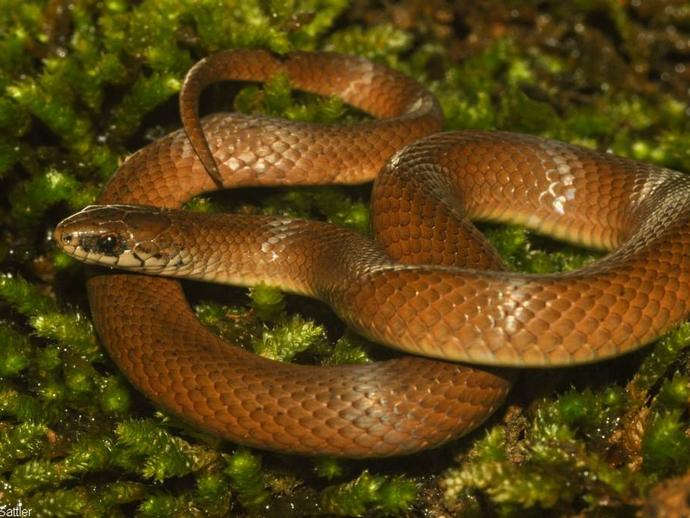
Ben here with the Thursday edition of #BenInNature presented by our friends at Carter Bank & ...
January 28, 2021
Ben here with the Thursday edition of #BenInNature presented by our friends at Carter Bank & Trust! Here's our pick for the second rarest snake in Virginia: Virginia valeriae pulchra, the mountain earthsnake! The mountain earthsnake is one of three subspecies of the smooth earthsnake, and of the three, it's the one with the smallest distribution. It occurs in the mountains of western Pennsylvania, northeastern West Virginia, and western Maryland. As far as Virginia, it's only been recorded on private land in Highland County, and unfortunately, the area where it's found is routinely logged for timber, which could put this subspecies at risk of being extirpated from Virginia. Like many of the snakes we're looking at ...
VMNH Myriapodologist Dr
January 27, 2021
VMNH Myriapodologist Dr. Jackson Means has many responsibilities at the museum, including curating and cataloguing specimens from the museum's myriapod holdings - one of the premiere myriapod collections in the world! [Myriapodology is the scientific study of myriapods, which includes centipedes, millipedes and others.] Help Jackson and the museum continue meeting its mission by becoming part of the VMNH family today! Join or renew your museum membership online now at www.vmnh.net/memberhship!
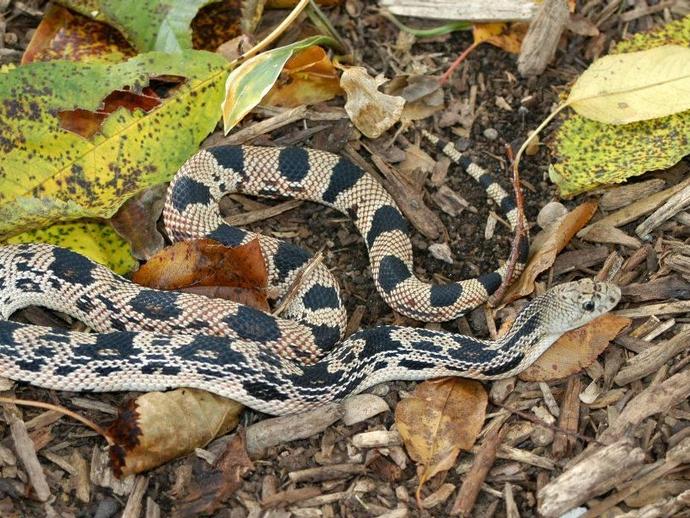
Ben here with today's edition of #BenInNature presented by our friends at Carter Bank & Trust!
January 27, 2021
Ben here with today's edition of #BenInNature presented by our friends at Carter Bank & Trust! We're continuing to count down Virginia's top five rarest snakes with our number three pick: Pituophis melanoleucus melanoleucus, the Northern pine snake! The Northern pine snake has a scattershot range with the largest distribution occurring in South Carolina. In Virginia, it has only ever been recorded in four counties: Augusta, Bath, Botetourt, and Craig. However, you can't just head to one of those counties and expect to trip over a pine snake; according to the Virginia Herpetological Society website, even people who live within the range of these snakes almost never see them. These snakes are secretive and spend a great ...
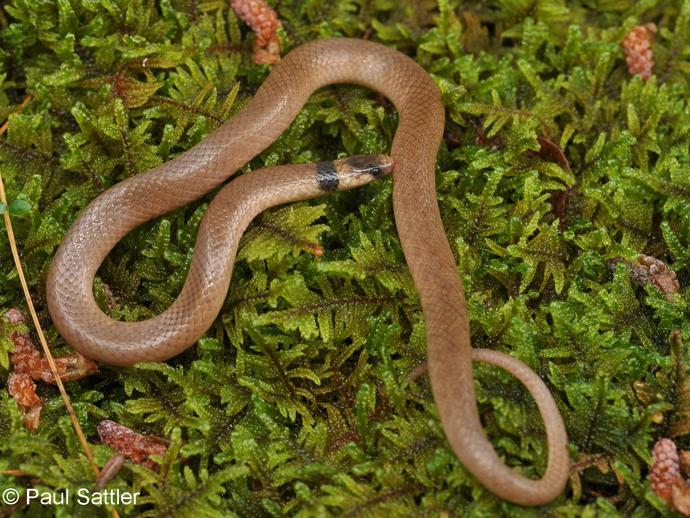
It's time for today's edition of #BenInNature presented by our friends at Carter Bank & Trust!
January 26, 2021
It's time for today's edition of #BenInNature presented by our friends at Carter Bank & Trust! Here's our pick for the fourth rarest snake in Virginia: Tantilla coronata, the southeastern crowned snake! The southeastern crowned snake is a little guy, averaging between eight and ten inches in length, and like all the snakes we're looking at this week, it's harmless -- if handled, it won't even bite (although it may release a foul-smelling musk all over your hands, which isn't exactly a stroll through the tulips). These snakes are generally found in dry pine forests with decaying logs and stumps, and all specimens that have been found in Virginia have been found underneath rocks or decaying wood. However, they're not ...
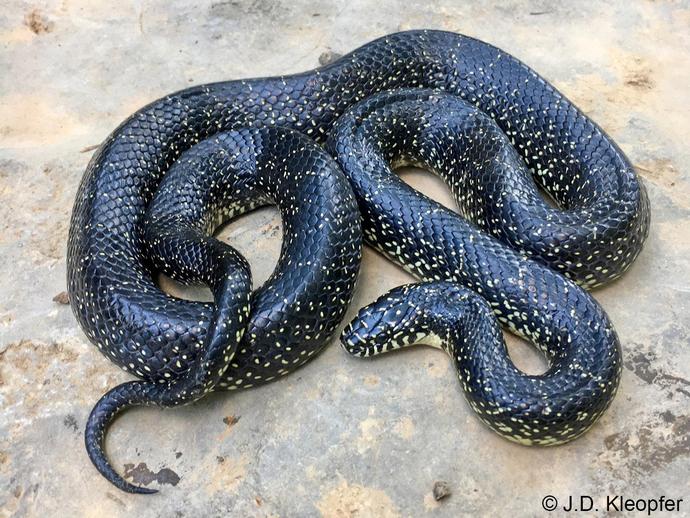
Welcome to week four of #BenInNature's Herp Month presented by Carter Bank & Trust!
January 25, 2021
Welcome to week four of #BenInNature's Herp Month presented by Carter Bank & Trust! This week, we'll be counting down the top five rarest snakes in Virginia, beginning with our number five choice: Lampropeltis nigra, the eastern black kingsnake! In some states, the eastern black kingsnake is actually one of the more common snakes you'll find. It ranges from southern Illinois to Ohio, then down through the Appalachian foothills all the way to Louisiana. If you want to find one in Virginia, however, you'll have to go to the extreme southwestern tip of the state; it has only been recorded in the counties of Lee, Scott, and Washington here in the commonwealth. Within their range, these snakes can be found at abandoned ...
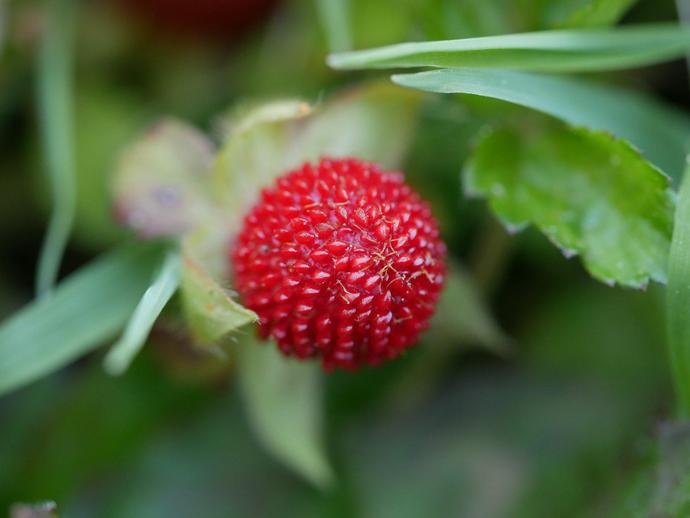
We're reaching into the archives for today's #BenInNature update presented by our friends at ...
January 24, 2021
We're reaching into the archives for today's #BenInNature update presented by our friends at Carter Bank & Trust! The following post was originally published on May 13, 2020. There's a very good chance that you have a patch of these growing in a shady spot in your lawn right now. Although they're often called "wild strawberries," this is actually the mock strawberry Potentilla indica. This plant is native to eastern and southern Asia, but it has been introduced and naturalized in a number of places all over the world, including the U.S. Much like strawberries, this plant sends out stolons (an underground stem, popularly known as a "runner") and can spread pretty quickly. It produces yellow flowers around the middle of ...
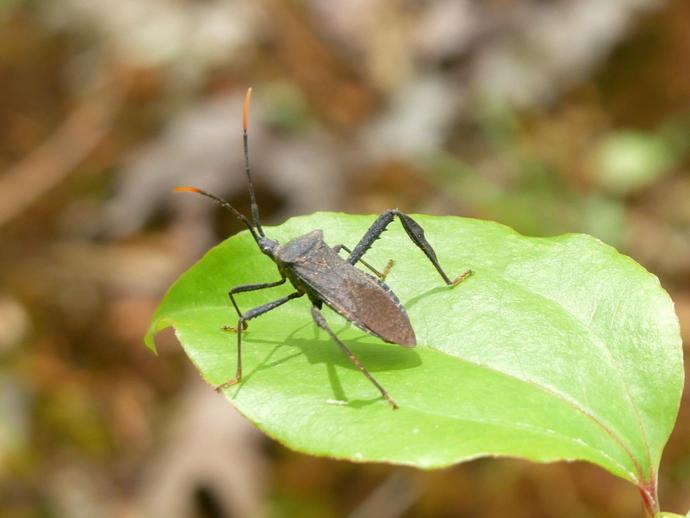
We're reaching into the archives for today's #BenInNature update presented by our friends at ...
January 23, 2021
We're reaching into the archives for today's #BenInNature update presented by our friends at Carter Bank & Trust! The following post was originally published on May 12, 2020. This insect with the orange highlights is Acanthocephala terminalis, a leaf-footed bug belonging to the family Coreidae. Leaf-footed bugs get their name from the way the hind legs of many species in the family flare out and resemble leaves; it's less dramatic on this particular species, but you can still see how the rear legs are flared out a bit. Leaf-footed bugs generally feed on sap by injecting their needle-like mouthparts into the soft tissue of a plant. If you've ever grown squash, cucumbers, or pumpkins, you might have had to deal with ...
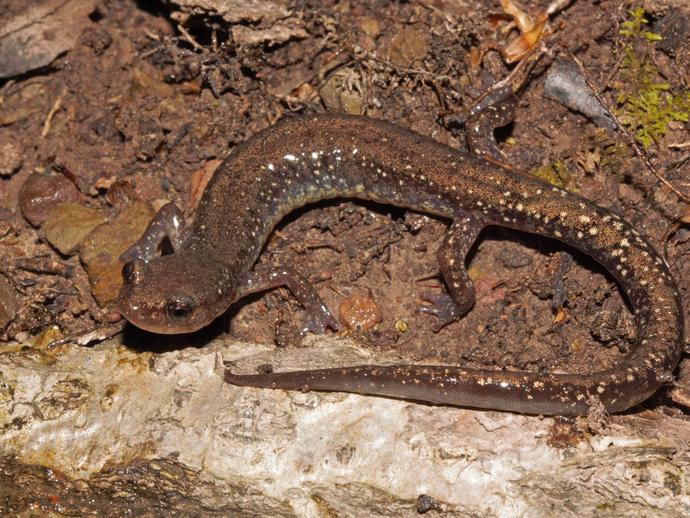
Ben here with the latest edition of #BenInNature presented by our friends at Carter Bank & Trust!
January 22, 2021
Ben here with the latest edition of #BenInNature presented by our friends at Carter Bank & Trust! It's time to reveal our pick for the rarest salamander in Virginia: Plethodon dixi, the Dixie Caverns salamander! If you want to spot a Dixie Caverns salamander, there are just a few places to go. The first, of course, is Dixie Caverns, the limestone solution cave just west of Salem, Va. which has been a popular tourist destination for decades. Individuals have also been spotted in and around a couple of other caves in the general area, but this species definitely has a limited distribution. The Dixie Caverns salamander was first discovered in 1946, and it was soon determined to be a variant of Wehrle's salamander, which ...
Beavers take the spotlight in this week's "Museum Minute" presented by Carter Bank & Trust!
January 22, 2021
Beavers take the spotlight in this week's "Museum Minute" presented by Carter Bank & Trust! If you plan to visit the museum this Saturday, be sure to stop by the Harvest Foundation Hall of Ancient Life for a special, beaver-themed activity table presented by the VMNH education team! VMNH educators will be on hand to present a special display of specimens, such as a beaver fur, skull, and "chews" (trees that have been cut down by beavers), while teaching visitors about the lives and habitats of these semiaquatic rodents! This drop-by activity is included in the price of admission and is available any time from 10 a.m. to noon and and 1 to 3 p.m. on Saturday, January 23. We hope to see you here! ABOUT MUSEUM MINUTE The ...
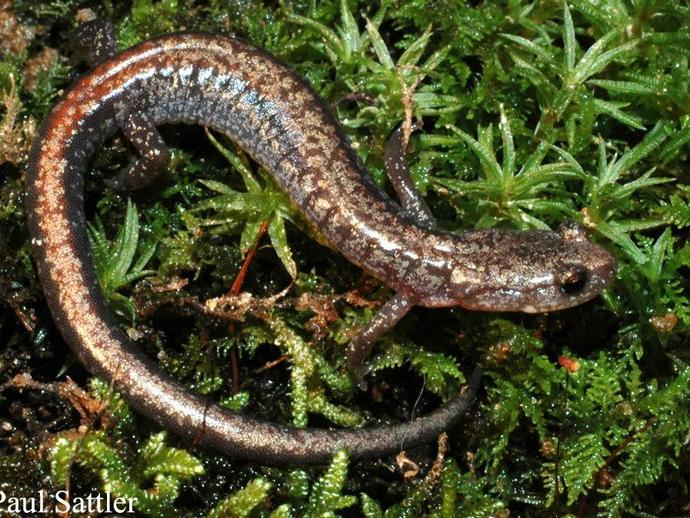
It's time for the Thursday edition of #BenInNature presented by our friends at Carter Bank & ...
January 21, 2021
It's time for the Thursday edition of #BenInNature presented by our friends at Carter Bank & Trust! Here's our pick for the second rarest salamander in Virginia: Plethodon sherando, the Big Levels salamander! The Big Levels salamander, like other salamanders we've looked at this week, can only be found in a small range in Virginia. It's only found in a tiny portion of the central Blue Ridge Mountains in Augusta County, generally in areas that are heavily forested, near fresh water, and have higher than average rainfall. The higher elevations of this area -- the titular Big Levels -- definitely qualify, as they average more than 50 inches of rain per year! The Big Levels salamander may only be found in a relatively ...
Hey, Dragon Festival fans!
January 20, 2021
Hey, Dragon Festival fans! Check out this timelapse video of the creation of Tiamat, a 37 foot-long dragon designed and created by J. Leigh and The Color of Mud Studio! Tiamat is scheduled to make its Dragon Festival debut this October at VMNH! This timelapse video - also produced by J. Leigh and The Color of Mud Studio - includes over 1000 hours of content condensed into less than an 8 minute video! Tiamat was a 2 year project originally developed for the "On the Origin of Dragons" temporary exhibit, which ran from January - March 2020 inside Roanoke College's Olin Hall Galleries. To learn more about Tiamat, be sure to visit The Color of Mud Studio's website at thecolorofmud.com! More details about the 2021 Dragon ...
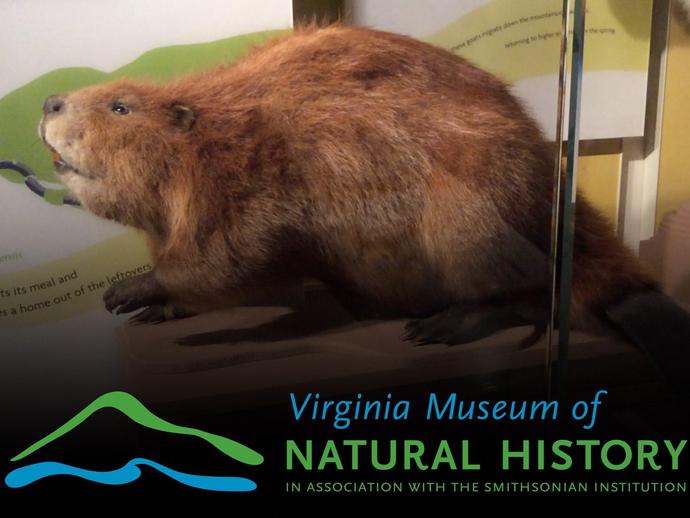
Planning a visit to the museum this Saturday?
January 20, 2021
Planning a visit to the museum this Saturday? If so, be sure to stop by the Harvest Foundation Hall of Ancient Life for a special, beaver-themed activity table presented by the VMNH education team! VMNH educators will be on hand to present a special display of specimens, such as a beaver fur, skull, and "chews" (trees that have been cut down by beavers), while teaching visitors about the lives and habitats of these semiaquatic rodents! Oh, and be sure not to miss the taxidermy beaver display inside the museum's Lee & George W. Lester, II How Nature Works gallery while you're here! This drop-by activity is included in the price of admission and is available any time from 10 a.m. to noon and and 1 to 3 p.m. on Saturday, ...
Assistant Curator of Paleontology Dr
January 20, 2021
Assistant Curator of Paleontology Dr. Adam Pritchard presents "The Tale of the Living Fossil" in this latest episode of "Tales of Ancient Life" presented by Carter Bank & Trust! In this episode, Dr. Pritchard focuses on a living species of tree that has relatives virtually identical to it in the fossil record!
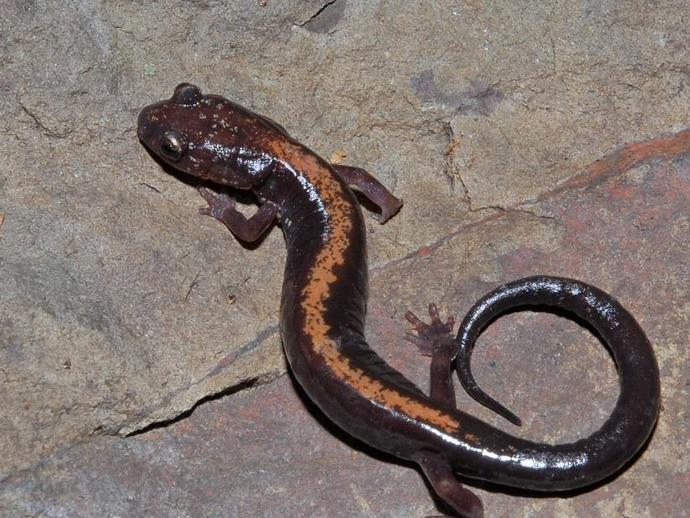
Ben here with the Wednesday edition of #BenInNature presented by our friends at Carter Bank & ...
January 20, 2021
Ben here with the Wednesday edition of #BenInNature presented by our friends at Carter Bank & Trust! Here's our choice for the third rarest salamander in Virginia: Plethodon shenandoah, the Shenandoah salamander! This small salamander is known from just three isolated areas on three mountains in northern Virginia's Shenandoah National Park: Hawksbill, Stony Man, and The Pinnacles. On those three mountains, it can only be found on their north-facing talus slopes (a talus slope is formed by an accumulation of rock debris). What makes this particularly remarkable is that talus slopes are usually pretty dry, and salamanders need plenty of moisture. As a result, you'll only find these salamanders in scattered, moist ...
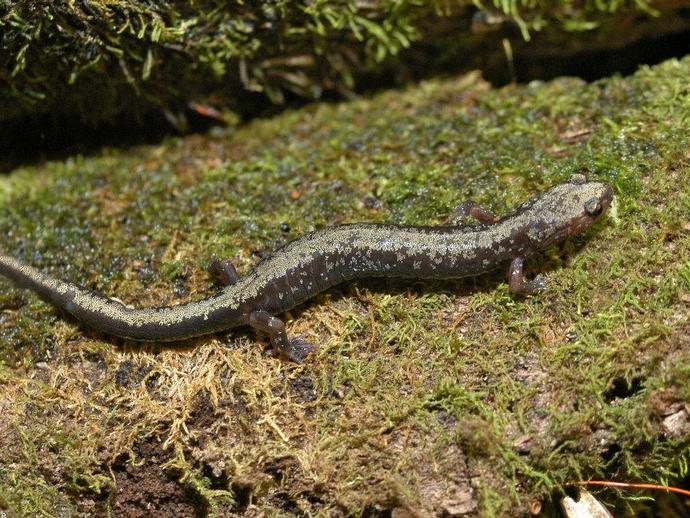
It's time for today's edition of #BenInNature presented by our friends at Carter Bank & Trust!
January 19, 2021
It's time for today's edition of #BenInNature presented by our friends at Carter Bank & Trust! Before we get into our number four pick for the rarest salamander in Virginia, it's worth asking the question: what does "rare" really mean? When I decided to do Herp Month, I reached out to Jason Gibson of the Virginia Herpetological Society (who is also a VMNH Research Associate and a great friend of the museum) to get his opinion on my picks. He raised a very good question: which is considered more "rare," a species that can only be found in a small area of Virginia but is fairly common within that small area, or a species that has a wider distribution nationwide but is really hard to find in Virginia? After much ...
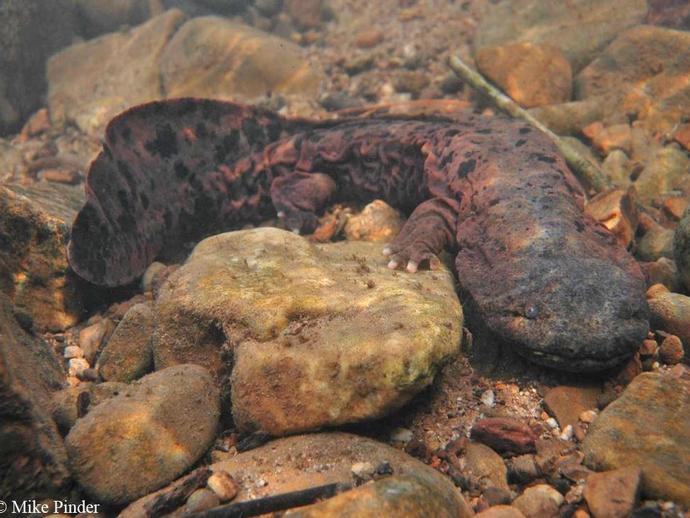
Ben here with today's edition of #BenInNature presented by our friends at Carter Bank & Trust!
January 18, 2021
Ben here with today's edition of #BenInNature presented by our friends at Carter Bank & Trust! Welcome to the third week of Herp Month! This week, we're counting down the top five rarest salamanders in Virginia! Our number five pick is one of my absolute favorite critters: Cryptobranchus alleganiensis alleganiensis, the Eastern hellbender. The Eastern hellbender is the largest salamander in North America, averaging between 12 and 20 inches in length! If you think that's impressive, you should see its cousins. The hellbender belongs to the family Cryptobranchidae, which also includes the Chinese giant salamander (Andrias davidianus) and the Japanese giant salamander (Andrias japonicus), both of which can grow to more than ...
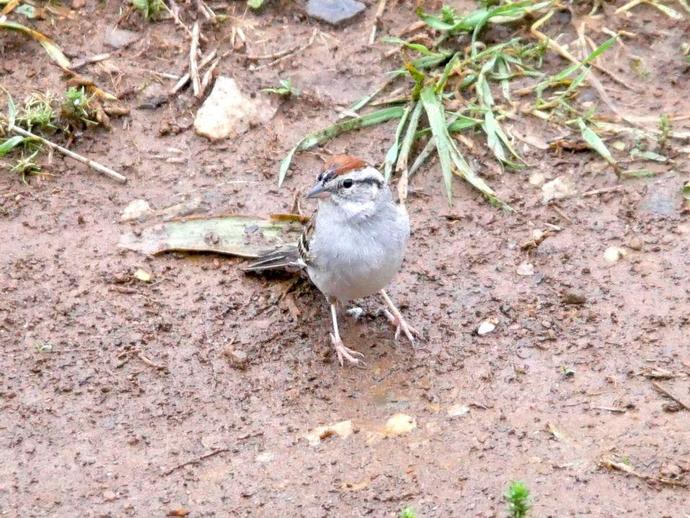
We're reaching into the archives for today's #BenInNature update presented by our friends at ...
January 17, 2021
We're reaching into the archives for today's #BenInNature update presented by our friends at Carter Bank & Trust! The following post was originally published on May 11, 2020. I've been trying to attract more birds within camera range by scattering birdseed in my front yard (and also by hanging a suet feeder that the birds refuse to acknowledge in any way). One visitor that I've been seeing constantly is the chipping sparrow (Spizella passerina). Chipping sparrows are common passerine (perching) birds with an enormous range that includes most of North America. These birds can vary quite a bit throughout their range, and there are at least two subspecies that can be found out west. They often forage on the ground for seeds, ...
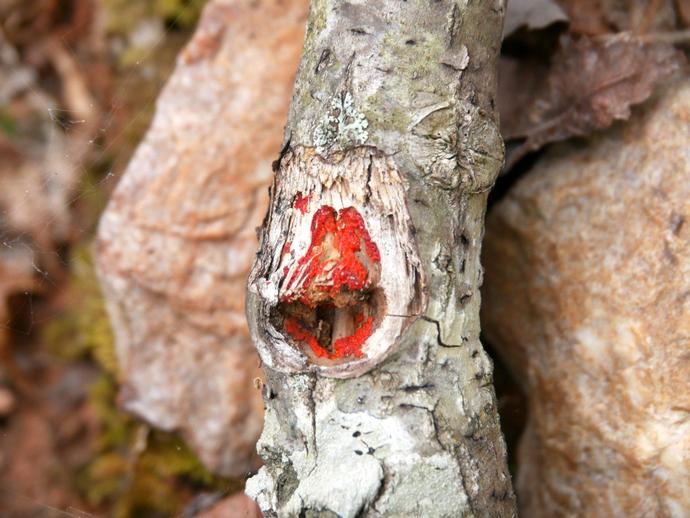
We're reaching into the archives for today's #BenInNature update presented by our friends at ...
January 16, 2021
We're reaching into the archives for today's #BenInNature update presented by our friends at Carter Bank & Trust! The following post was originally published on May 10, 2020. While I'm no expert on slime molds (nor have I ever claimed to be), I'm pretty sure this is the red raspberry slime mold Tubifera ferruginosa. Slime molds used to be considered fungi, but now they are grouped within the kingdom Protista, which serves as the taxonomic catch-all for everything that doesn't fit into any of the other kingdoms of life. This means they aren't animals, plants, or fungi. Other examples of protists include amoebas, diatoms and algae. Slime molds start out as single-celled amoeba-like critters that usually feed on bacteria. ...
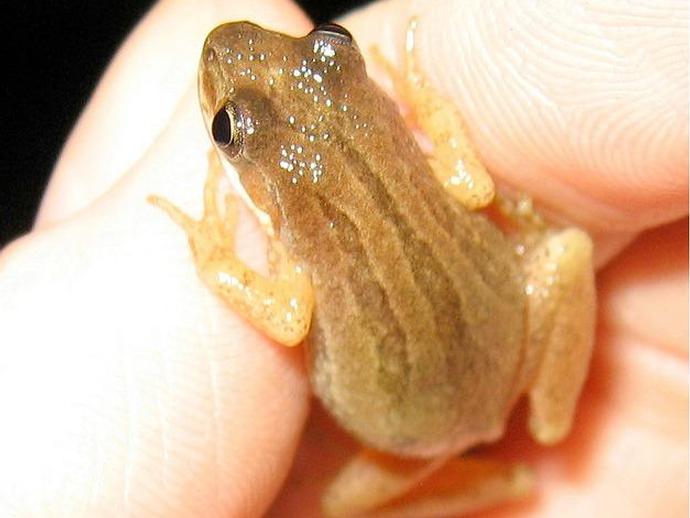
Ben here with the Friday edition of #BenInNature presented by our friends at Carter Bank & Trust!
January 15, 2021
Ben here with the Friday edition of #BenInNature presented by our friends at Carter Bank & Trust! The second week of Herp Month concludes with our pick for the rarest frog in Virginia: Pseudacris kalmi, the New Jersey chorus frog! Many of the frogs, toads, and lizards that we've looked at over the last week are native to the south, with Virginia representing the northern extent of their range. The New Jersey chorus frog is the opposite; its range extends from the coast of New York state down to Virginia, with Virginia representing the southern extent of its range. Of all the species of Virginia reptiles and amphibians we've looked at so far, this is the one that will require the most travel planning to find: it has ...
It's time for this week's "Museum Minute" presented by Carter Bank & Trust!
January 15, 2021
It's time for this week's "Museum Minute" presented by Carter Bank & Trust! Today's episode puts the spotlight on opossums, a display of which can be found inside the museum's Lee & George W. Lester, II How Nature Works gallery. ABOUT MUSEUM MINUTE The Virginia Museum of Natural History has a spectacular assortment of displays within its exhibit galleries! Some displays are unforgettable, while others don't always get the attention they deserve. Through the original series "Museum Minute", museum educators highlight various displays throughout the exhibit galleries, while providing intriguing facts you may not have known. "Museum Minute" is made possible thanks to VMNH Corporate Partner Carter Bank & Trust.
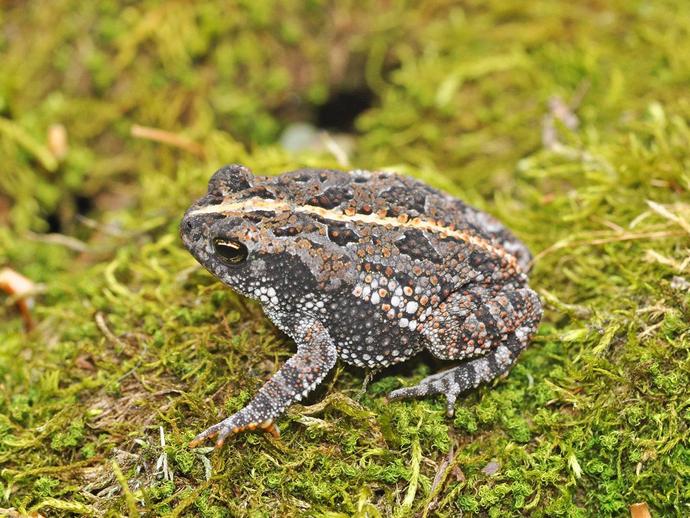
Ben here with the Thursday edition of #BenInNature presented by our friends at Carter Bank & ...
January 14, 2021
Ben here with the Thursday edition of #BenInNature presented by our friends at Carter Bank & Trust! Here's our pick for the number two rarest frog or toad in Virginia: Anaxyrus quercicus, the oak toad! On Tuesday, we looked at the little grass frog (Pseudacris ocularis), which is the smallest frog in North America. The oak toad is the smallest toad in North America, averaging between 0.75 and 1.3 inches in length! Like many of the frogs and toads we've looked at this week, this species is also native to the southeastern Coastal Plain, and Virginia represents the northernmost portion of its range. According to the website of the Virginia Herpetological Society, these little toads have been recorded in the counties of ...
The museum offers an exciting lineup of virtual science programming for all ages!
January 13, 2021
The museum offers an exciting lineup of virtual science programming for all ages! Help the museum continue meeting its mission and become a part of the VMNH family by joining or renewing your museum membership online today! www.vmnh.net/membership
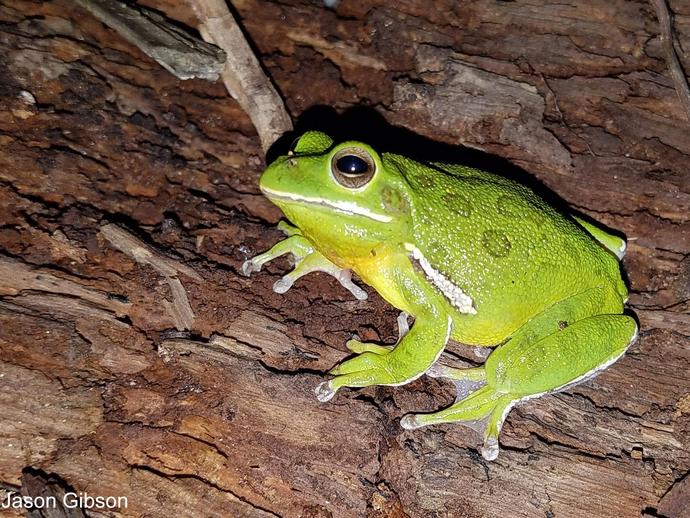
Ben here with the Wednesday edition of #BenInNature presented by our friends at Carter Bank & ...
January 13, 2021
Ben here with the Wednesday edition of #BenInNature presented by our friends at Carter Bank & Trust! Here's the number three pick in our countdown of Virginia's rarest frogs and toads: Hyla gratiosa, the barking treefrog! The barking treefrog gets its name from its distinctive call (although to my ears, it sounds more like someone honking the horn of a tiny clown car than a bark, but I guess this is why they don't let me name animals). Like the little grass frog that we looked at yesterday, this species can be found throughout the Coastal Plain of the southeastern United States, although there are also isolated populations in Kentucky, Tennessee, Maryland, Delaware, and southern New Jersey. This suggests that the ...
Speaker: Kal Ivanov, Ph
January 12, 2021
Speaker: Kal Ivanov, Ph.D., VMNH Assistant Curator of Invertebrate Zoology Due to its geographic location, topographic variability, and diversity of ecoregions, Virginia ranks as one of the most biodiverse states in the nation. Despite Virginia's remarkable biodiversity, and the state's long tradition of education and culture, however, the study of Virginia's insect fauna has been deficient and perhaps only half of the species expected to occur in the Commonwealth have been documented. In this lecture, Dr. Kal Ivanov, Virginia Museum of Natural History Associate Curator of Recent Invertebrates, will use the museum's ongoing "Ants of Virginia Project" to illustrate topics ranging from what we know about the world's ...
Associate Curator of Recent Invertebrates Dr
January 12, 2021
Associate Curator of Recent Invertebrates Dr. Kal Ivanov is set to present "Virginia's Biodiversity: An Entomologist's Perspective" live at the Wayne Theatre this evening at 7pm! The presentation will also be streamed live on the Facebook pages of the Wayne Theatre and museum.
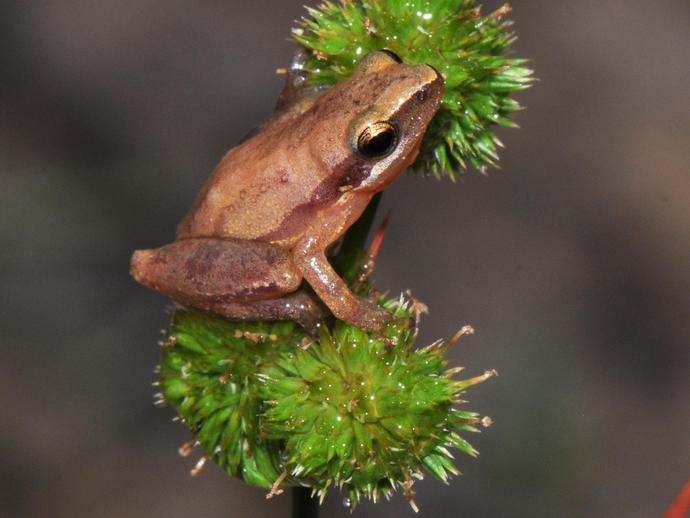
Ben here with the Tuesday edition of #BenInNature presented by our friends at Carter Bank & Trust!
January 12, 2021
Ben here with the Tuesday edition of #BenInNature presented by our friends at Carter Bank & Trust! We're continuing to count down the rarest frogs and toads in Virginia this week! Here's our number four pick: Pseudacris ocularis, the little grass frog. "Little grass frog" is an appropriate name for this species, because these are the smallest frogs found in North America! They average between just 0.4 and 0.6 inches long! That's just about the length of the nail on my little finger (I have weird orangutan hands though, so your own mileage may vary). These tiny frogs can be found in ponds, bogs, swamps, and even ditches within the southeastern Coastal Plain, stretching from southeastern Virginia down to Florida. They eat ...
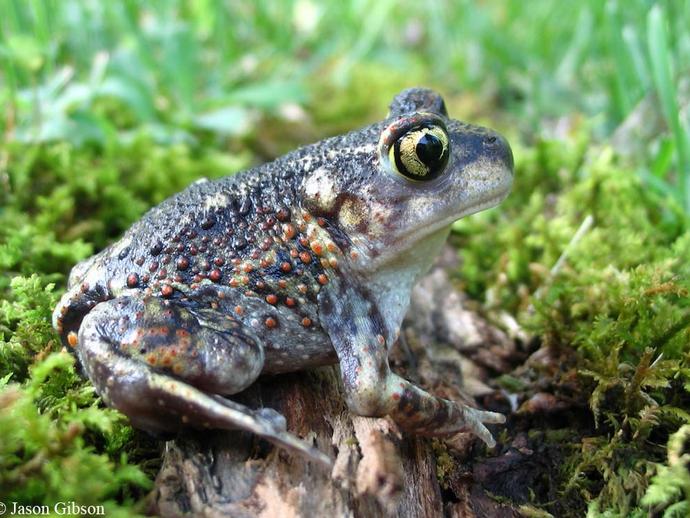
Ben here with the Monday edition of #BenInNature presented by our friends at Carter Bank & Trust!
January 11, 2021
Ben here with the Monday edition of #BenInNature presented by our friends at Carter Bank & Trust! Herp Month rolls on this week as we count down the top five rarest frogs and toads in Virginia starting with our number five pick: Scaphiopus holbrookii, the eastern spadefoot toad. The eastern spadefoot isn't necessarily a rare toad; they can be found throughout much of the southeastern U.S. and in more than 60 localities in Virginia. However, actually finding one is a cause for celebration because these toads spend a huge portion of their lives underground, visiting the surface mainly to eat and breed. Adult eastern spadefoot toads prefer habitats with sandy or loamy soils, and they spend most of their lives in their ...
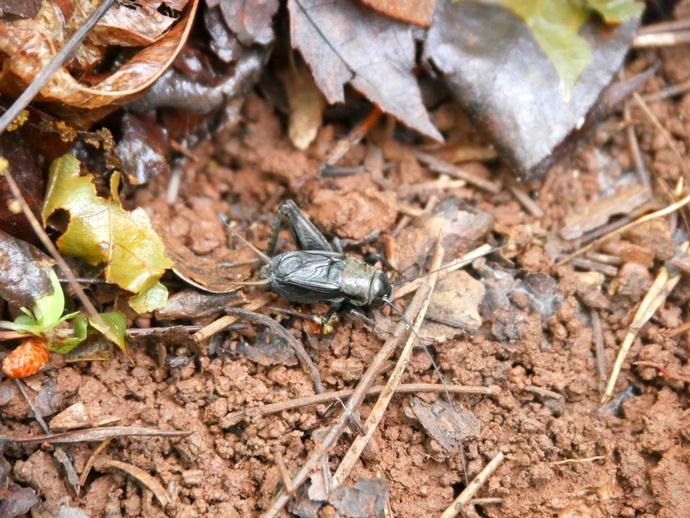
We're reaching into the archives for today's #BenInNature update presented by our friends at ...
January 10, 2021
We're reaching into the archives for today's #BenInNature update presented by our friends at Carter Bank & Trust! The following post was originally published on May 9, 2020. Did you know that you can use field crickets to tell the temperature? When a piece of information appears in both Scientific American and the Farmer's Almanac, you know it must be true! Here's how to do it: When you hear a field cricket chirping outside one evening, go out and count the number of chirps it makes in 14 seconds. Write this number down, and then record the number of chirps in two more 14-second intervals. Add the three numbers together and then divide by three to get the average, and then add 40 to that number. The number you're left ...
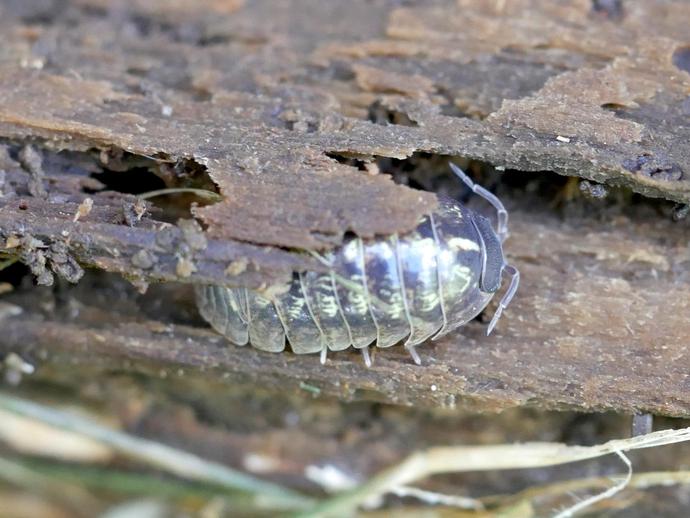
We're reaching into the archives for today's #BenInNature update presented by our friends at ...
January 9, 2021
We're reaching into the archives for today's #BenInNature update presented by our friends at Carter Bank & Trust! The following post was originally published on May 8, 2020. This critter has more names than the average phonebook. It's usually referred to as a "woodlouse," but you might also call it a pill bug, a doodlebug, a roly-poly, a sow bug, or any number of other fun names. The pictured woodlouse is most likely Armadillidium vulgare, which is an invasive European species that can be found throughout much of the U.S. So what is a woodlouse? Well, it's not a louse. It's also not an insect. It belongs to the isopod order, which means that -- believe it or not -- these guys are crustaceans! They belong to the same ...

Congratulations to VMNH Deputy Director Ryan Barber for being selected to serve a 1-year term on ...
January 8, 2021
Congratulations to VMNH Deputy Director Ryan Barber for being selected to serve a 1-year term on the U.S. Government Relations Committee of the Association of Fundraising Professionals (AFP)! AFP is the professional association of individuals and organizations that generate philanthropic support for a wide variety of charitable institutions. Founded in 1960, AFP advances philanthropy through its 30,000 members in more than 240 chapters throughout the world. AFP has inspired global change and supported efforts that have generated over $1 trillion. AFP's individual and organizational members raise over $115 billion annually.
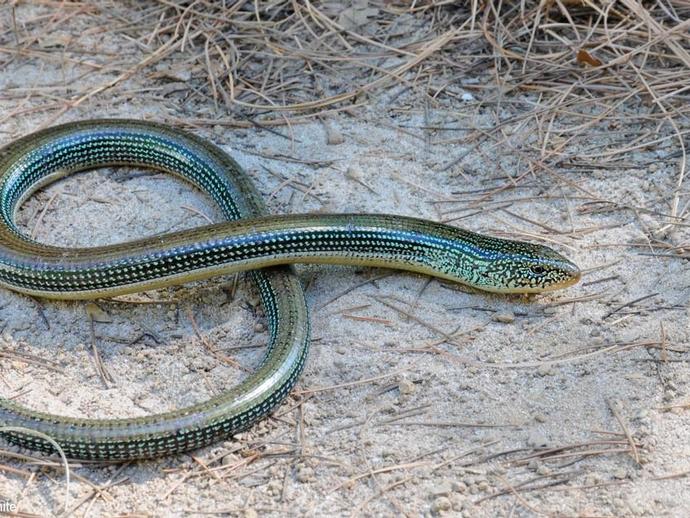
Ben here with the Friday edition of #BenInNature presented by our friends at Carter Bank & Trust!
January 8, 2021
Ben here with the Friday edition of #BenInNature presented by our friends at Carter Bank & Trust! We're closing out the first week of Herp Month with a look at our pick for the number one rarest lizard in Virginia: Ophisaurus ventralis, the eastern glass lizard! Earlier this week, we looked at another glass lizard, the eastern slender glass lizard Ophisaurus attenuatus longicaudus. While that species can only be found in a handful of scattered locations in the eastern half of the state, today's species makes it look downright common in comparison. In fact, according to the Virginia Herpetological Society website, Ophisaurus ventralis was unknown in Virginia until 1981, when three researchers discovered the species in ...
It's time for this week's "Museum Minute" presented by Carter Bank & Trust!
January 8, 2021
It's time for this week's "Museum Minute" presented by Carter Bank & Trust! Today's episode puts the spotlight on the museum's Madagascar Hissing Cockroach colony, which can be found inside the Suzanne M. Lacy Education Center! ABOUT MUSEUM MINUTE The Virginia Museum of Natural History has a spectacular assortment of displays within its exhibit galleries! Some displays are unforgettable, while others don't always get the attention they deserve. Through the original series "Museum Minute", museum educators highlight various displays throughout the exhibit galleries, while providing intriguing facts you may not have known. "Museum Minute" is made possible thanks to VMNH Corporate Partner Carter Bank & Trust.
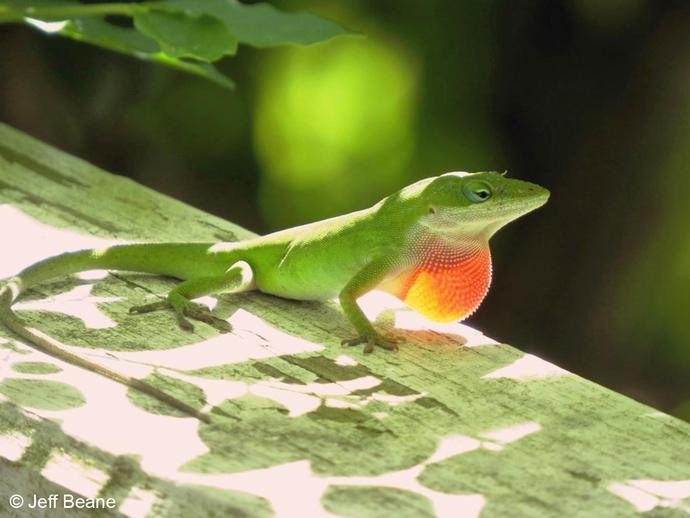
Ben here with the Thursday edition of #BenInNature presented by our friends at Carter Bank & ...
January 7, 2021
Ben here with the Thursday edition of #BenInNature presented by our friends at Carter Bank & Trust! We're continuing our countdown of the top five rarest lizards in Virginia with our number two entry, the green anole (Anolis carolinensis)! If you've ever had pet lizards, you might be familiar with the green anole; I got one at a pet shop when I was a little kid. They're often called "American chameleons" in the pet trade due to their ability to change colors between green and brown. However, these lizards are not chameleons; they're actually more closely related to iguanas. It's not entirely clear why these lizards change colors. In many cases, they seem to change colors depending on their stress levels or to assert ...
The museum has an exciting future in Waynesboro ...
January 6, 2021
The museum has an exciting future in Waynesboro, as plans move forward for a museum campus in downtown! Help the museum continue meeting its mission and become a part of the VMNH family by joining or renewing your museum membership online today! www.vmnh.net/membership
Assistant Curator of Paleontology Dr
January 6, 2021
Assistant Curator of Paleontology Dr. Adam Pritchard is back with a brand new episode of "Tales of Ancient Life" presented by Carter Bank & Trust! As tribute to the recent holidays and the current cold weather, Dr. Pritchard provides us with a paleontologist's perspective of the fascinating history of reindeer!
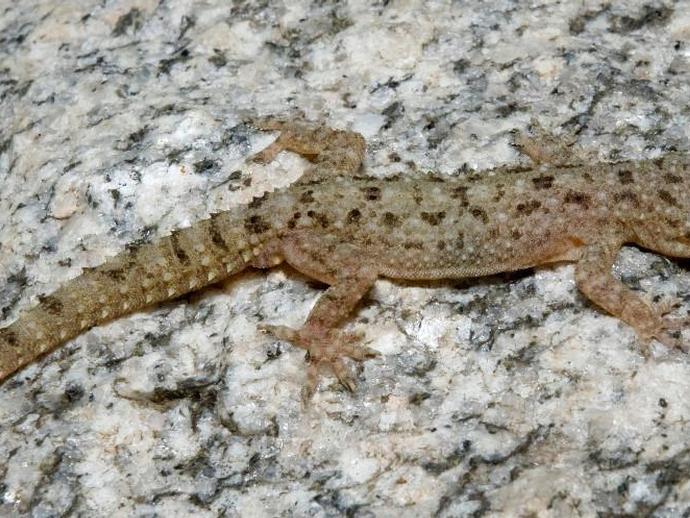
Ben here with the Wednesday edition of #BenInNature presented by our friends at Carter Bank & ...
January 6, 2021
Ben here with the Wednesday edition of #BenInNature presented by our friends at Carter Bank & Trust! We're continuing our countdown of the top five rarest lizards in Virginia with Hemidactylus turcicus, the Mediterranean gecko! When I was assembling my lists of the rarest reptiles and amphibians in Virginia for Herp Month, this was one that definitely took me by surprise! As the name suggests, this gecko is native to the Mediterranean, not Virginia (there are no geckos native to Virginia). Despite that fact, according to the Virginia Herpetological Society website, these geckos have been found in seven counties and 12 cities across the commonwealth! Given that Virginia isn't exactly the most hospitable place for these ...
Available live on the museum's Facebook page!
January 5, 2021
Available live on the museum's Facebook page!
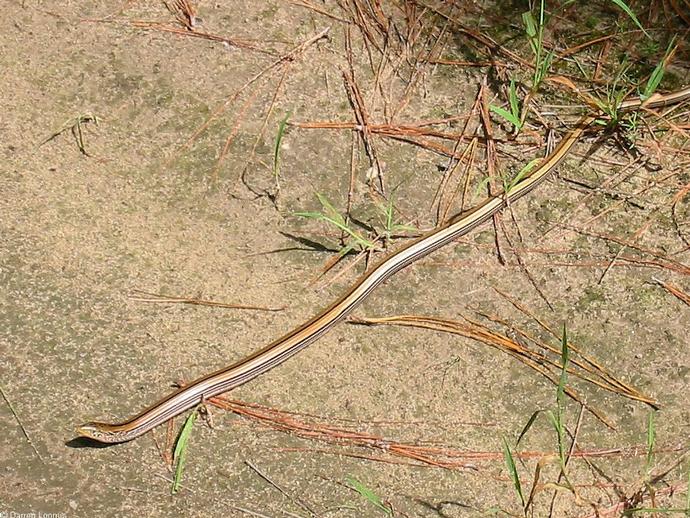
Ben here with the Tuesday edition of #BenInNature presented by our friends at Carter Bank & Trust!
January 5, 2021
Ben here with the Tuesday edition of #BenInNature presented by our friends at Carter Bank & Trust! This week, we continue looking at the top five rarest lizards in Virginia! Number four on the list is the eastern slender glass lizard (Ophisaurus attenuatus longicaudus). You might be thinking to yourself, "Ben, I have seen lizards before, and that is a photograph of a snake." Believe it or not, there are many species of lizards worldwide that have evolved to no longer have legs! There are a few ways to tell the difference; for example, legless lizards have eyelids and have external ear openings, while snakes do not. Glass lizards get their name from their tails. Like many lizards, they can snap off their own tails ...
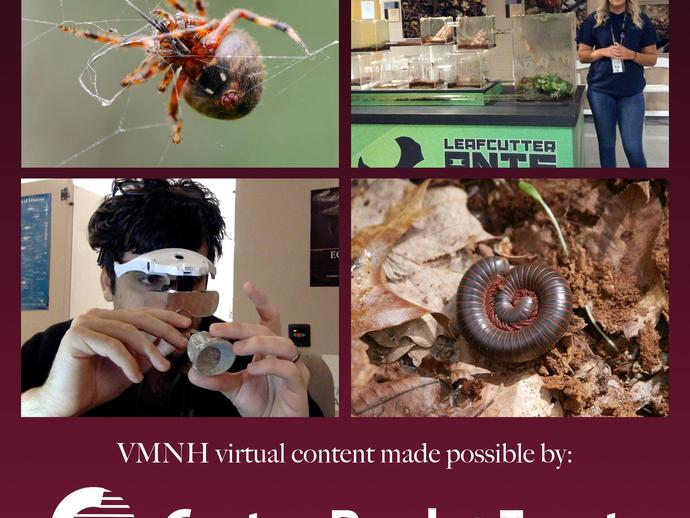
The Virginia Museum of Natural History is pleased to announce our partnership with Carter Bank & ...
January 4, 2021
The Virginia Museum of Natural History is pleased to announce our partnership with Carter Bank & Trust (www.cbtcares.com), which will ensure the continuation of the social media series #BenInNature, Tales of Ancient Life, and Museum Minute throughout 2021! A profound "thank you" to Carter Bank & Trust for your partnership and support of the museum's virtual educational content throughout the coming year! #BenInNature In this original series, Virginia Museum of Natural History Administrator of Science Ben Williams ventures outdoors to record snapshots of the unique sights that can be found in the natural world. From the colorful Northern red salamander to the intimidating (yet, largely harmless) Wolf spider, Ben provides ...
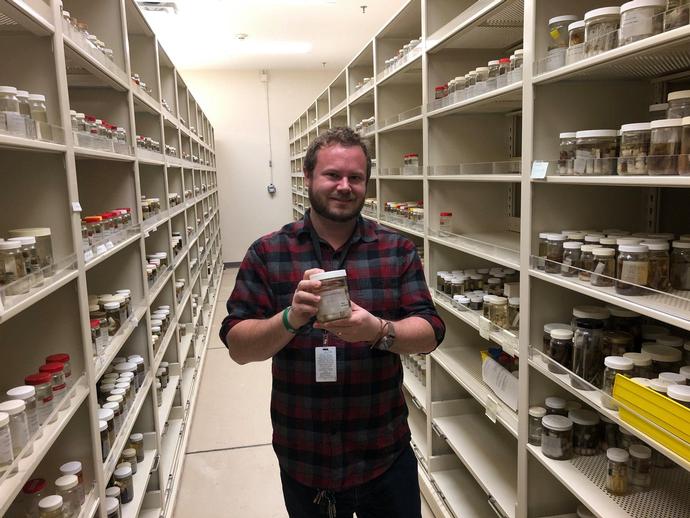
The Virginia Museum of Natural History is pleased to announce that Dr
January 4, 2021
The Virginia Museum of Natural History is pleased to announce that Dr. Jackson Means has been hired as the museum's full-time Myriapodologist! (Myriapodology is the scientific study of myriapods, which includes centipedes, millipedes and others). In this role, Dr. Means will be responsible for curating and cataloguing specimens from the museum's myriapod holdings - one of North America's premiere myriapod collections. Among other responsibilities, Dr. Means will conduct primary research on millipede taxonomy, systematics, and natural history, as well as collect, preserve, identify, and curate specimens. Dr. Means had previously served as VMNH Collections Assistant since March 2020 and used his extensive knowledge of ...
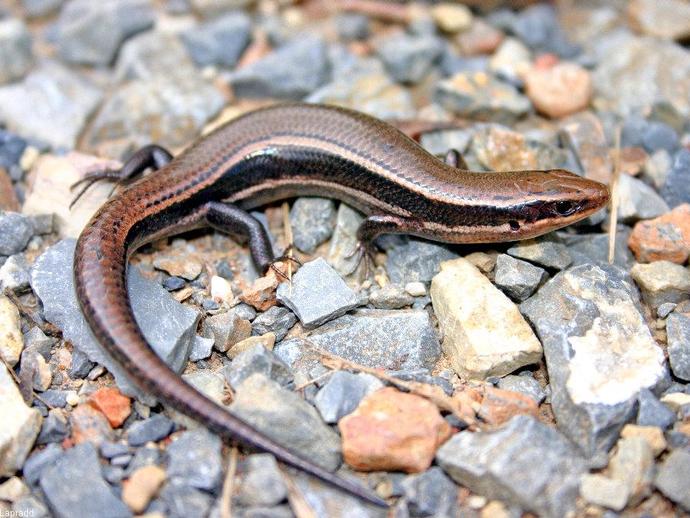
Ben here with the first entry in Herp Month ...
January 4, 2021
Ben here with the first entry in Herp Month, a month-long exploration of the rarest reptiles and amphibians in Virginia! This week, we'll be looking at the top five rarest lizards in Virginia, starting with Plestiodon anthracinus anthracinus, the northern coal skink! We have a number of different species of skinks in Virginia, the most ubiquitous of which is the common five-lined skink (Plestiodon fasciatus) that you probably see sunning themselves on the outside of your house every summer. However, you're pretty unlikely to spot the northern coal skink. This coal skink subspecies can be found in western New York, central Pennsylvania, and scattered throughout the Appalachians. According to the Virginia Herpetological ...
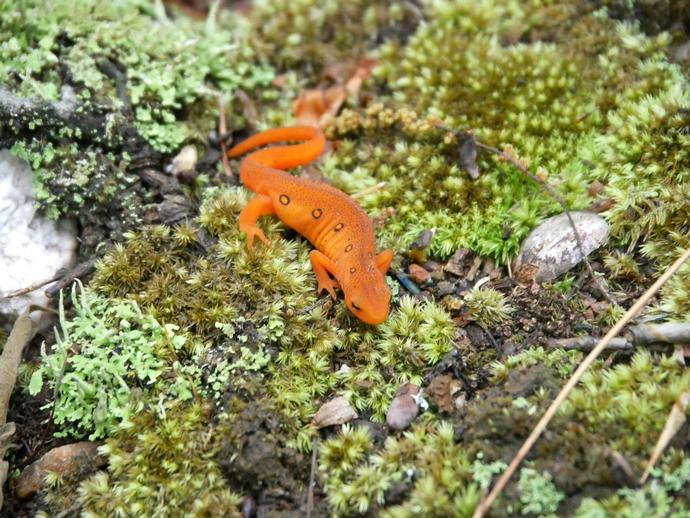
Hello folks, VMNH Administrator of Science Ben Williams here!
January 4, 2021
Hello folks, VMNH Administrator of Science Ben Williams here! Winter is here, and that means there aren't quite as many critters roaming about for me to photograph and share each day. However, that doesn't mean the nature posts are going to stop! This month, we're going to do something a little bit different. Get ready for HERP MONTH! Each week in January, we're going to look at the five rarest herps in Virginia! We'll start at noon today with a daily countdown of the five rarest lizards in Virginia. Next week, we'll look at the five rarest frogs and toads, followed by the five rarest salamanders, and we'll close out the month with the five rarest snakes. These are not species I've photographed myself; instead, I'll be ...
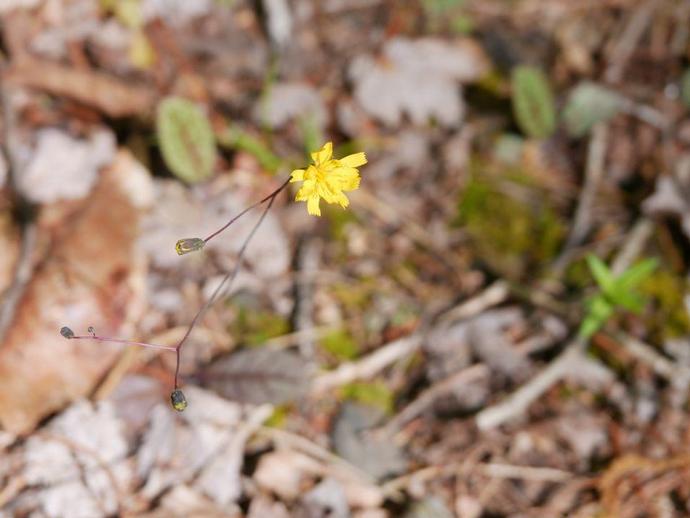
We're reaching into the archives for today's #BenInNature update!
January 3, 2021
We're reaching into the archives for today's #BenInNature update! The following post was originally published on May 6, 2020. Hieracium venosum, also known as rattlesnake hawkweed or Robin's plantain, is a fairly easy wildflower to spot. It has pale green leaves with striking purple veins; the leaves are crowded around the base of the plant. When it flowers, it sends up a long, spindly stem with yellow flowers that sort of resemble dandelions. That's no coincidence, as this plant belongs to the dandelion tribe within the sunflower family. Rattlesnake hawkweed blooms from May through September, and it can be found in shady areas with dry, sandy soil. According to the Lady Bird Johnson Wildflower Center website, the flower ...
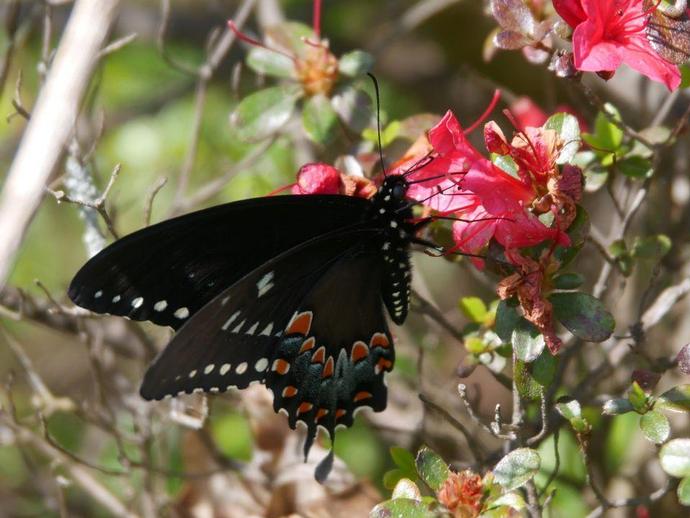
We're reaching into the archives for today's #BenInNature update!
January 2, 2021
We're reaching into the archives for today's #BenInNature update! The following post was originally published on May 5, 2020. When I first saw this butterfly, I thought it was a black morph of the eastern tiger swallowtail (Papilio glaucus), as female tiger swallowtails can be either yellow or black. However, VMNH Associate Curator of Invertebrate Zoology Dr. Kal Ivanov informed me that it's actually a different species entirely: Papilio troilus, better known as the spicebush swallowtail! The spicebush swallowtail is fairly common in the eastern U.S. and is primarily found in deciduous and swampy forests. The host plants for the caterpillars are either spicebush (Lindera benzoin) or white sassafras (Sassafras albidum). ...
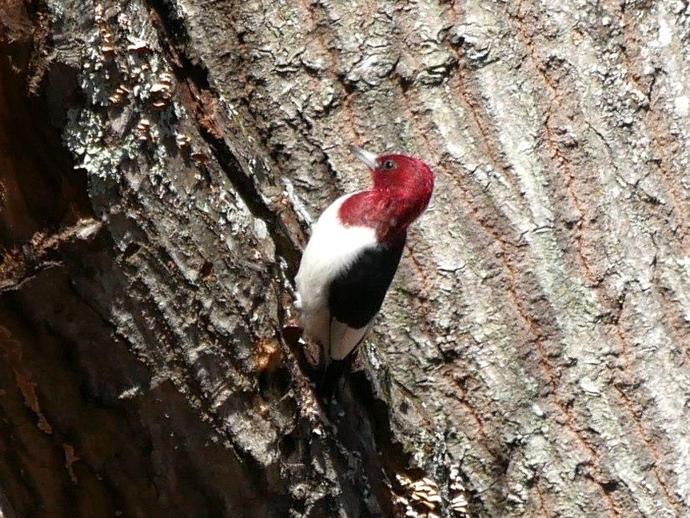
Happy New Year!
January 1, 2021
Happy New Year! Ben here with my favorite find from last week's VMNH Christmas bird count! This is one of three red-headed woodpeckers (Melanerpes erythrocephalus) that we spotted at J. Frank Wilson Memorial Park right behind the museum. Red-headed woodpeckers are not exactly endangered (their status is currently listed as "least concern" on the International Union for Conservation of Nature Red List of endangered species), but they're not as common as they once were. Of the seven species of woodpeckers that can be found in the Martinsville/Henry County area, these are the woodpeckers that you're probably least likely to spot. Historically, the red-headed woodpecker was once one of the more common species and could be ...
Archives
2025
2024
2023
2022
2021
2020
2019
2018
2017
2016
2015
2014
2013
2012
2011
2010
2009
2008

Please Visit Us Soon
Hours:
Tuesday - Saturday: 10am - 4pm
Sunday - Monday: Closed
Admission:
$10 for ages 18-59
$5 for ages 3-17, seniors 60+, and college students
FREE for children under 3, museum members, and members of ASTC participating institutions
My 4 year old son loves going to the museum. The exhibits are educational, interactive and kid-friendly.
”

 Hours & Admissions
Hours & Admissions Directions
Directions